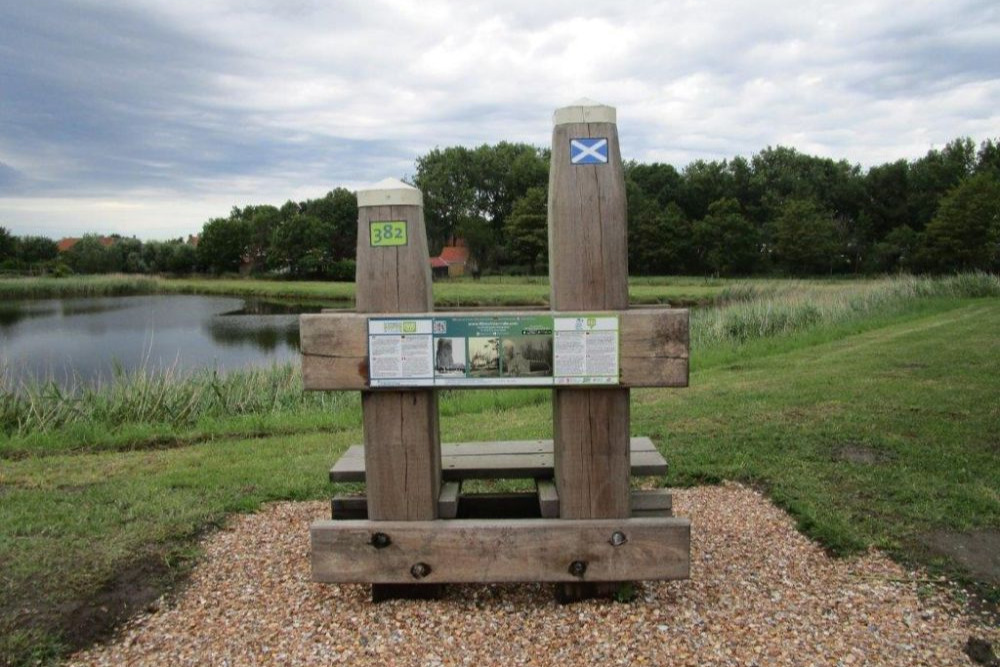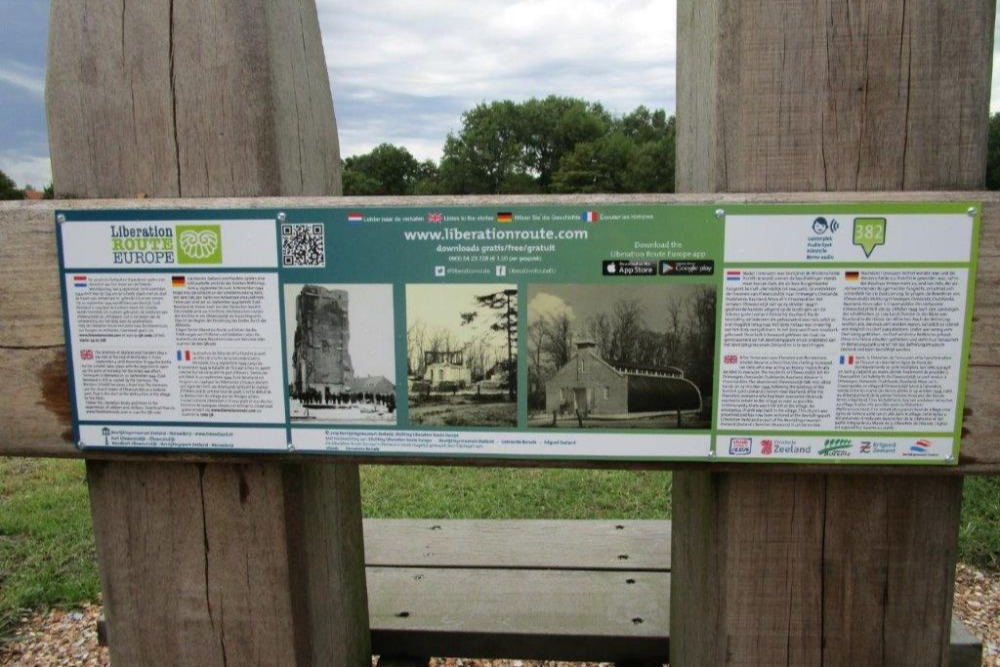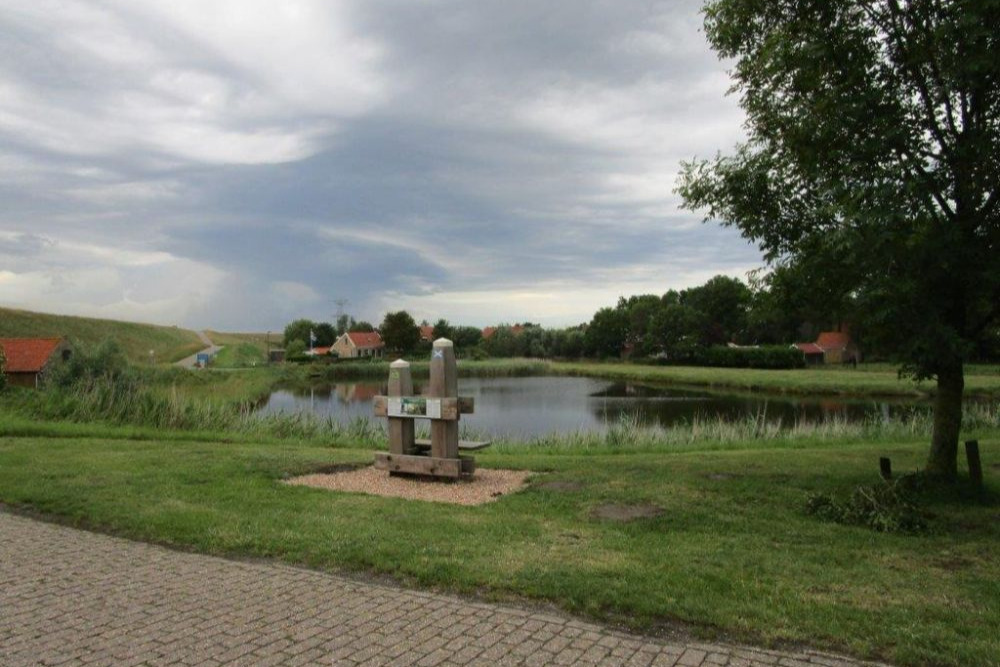Liberation Route Marker 382: The Liberation of Ellewoutsdijk
The Liberation of Ellewoutsdijk
On September 20, 1944, Terneuzen was liberated. Then the most unpleasant period for the inhabitants of Ellewoutsdijk began. After all, East Zeeuws-Vlaanderen was in the hands of the Allies and Zuid-Beveland was still occupied by the Germans. Thus, the Scheldt formed the front line.
On both sides of the Scheldt were artillery positions. Every moment of the day there could be shooting, by both sides. Sometimes it was quiet for a long time, but then suddenly shells could whiz through the air. This made a frightening sound. The Germans were using the church tower as a lookout and the Allies were aware of this. That was the beginning of the destruction of Ellewoutsdijk: from the Allied point of view, that church tower had to be destroyed.
The shelling from Zeeuws-Vlaanderen became more and more intense. Jan Oele, acting as deputy mayor, finally decided to evacuate. So the inhabitants of Ellewoutsdijk left; by bicycle (with surrogate tires), by horse and cart or by wheelbarrow with some things. They went to Driewegen, Ovezande, Oudelande, Baarland, Nisse or 's-Gravenpolder. Some even went on foot with their pig on a rope. After all, a pig was a precious possession; it meant meat for the whole winter.
There is actually little or nothing to tell about the liberation of Ellewoutsdijk itself because the entire village was evacuated. The official date of the liberation is October 29, 1944. After the liberation, everyone who was evacuated naturally wanted to return to the village as quickly as possible. Unfortunately, much of the village had been destroyed. Those whose houses were still standing went there as soon as possible. Some went after only a week; others had to first make their house as habitable as possible from the evacuation address. Those who no longer had a home scavenged in the rubble for some treasured belongings and sought a makeshift place to live. An emergency church was built in the village; this church now stands on the grounds at Liberation Museum Zeeland and can be visited.
Liberation Route Europe is a certified Cultural Route of the Council of Europe. With hundreds of sites and stories in nine European countries, the route links the main regions along the advance of the Allied Forces in 1943-1945.
The entire route consists of themed routes that can be travelled by by hiking, walking, cycling and car. These routes pass numerous historical and interesting sites and tell stories from a multitude of perspectives that were important in the final phase of World War II.
Many routes feature listening spots, offering the opportunity to listen to a historical story at a location. In addition, many ‘Vectors of Memory’ have been placed, indicating that the passer-by is on one of the Liberation Routes.
The routes can be found on the Liberation Route Europe website or in the app through which many stories can also be listened to.
Do you have more information about this location? Inform us!
Source
- Text: TracesOfWar & Liberation Route Europe
- Photos: Arie van Wijngaarden
Nearby
Museum
Point of interest
Monument
- War Memorial Driewegen - Driewegen
- Memorial Ovezande - Ovezande (Borssele)
- Memorial RAF 965 Squadron Terneuzen - Terneuzen
Cemetery
- War monument and graves Ellewoutsdijk - Ellewoutsdijk
- Dutch War Grave G.J. Verheijke - Ellewoutsdijk
- Commonwealth War Graves Driewegen - Driewegen
Remembrance Stone
- Stumbling Stone Dijkstraat 75 - Terneuzen
- Stumbling Stone Nieuwe Diepstraat 101 - Terneuzen
- Stumbling Stones Van Steenbergenlaan 22 - Terneuzen
Fortification
- Stützpunkt Große Kurfürst - Tobruk 3 Fortress Ellewoutsdijk - Ellewoutsdijk
- Stützpunkt Große Kurfürst - open emplacement Fort Ellewoutsdijk - Ellewoutsdijk
- Stützpunkt Große Kurfürst - Tobruk 2 Fortress Ellewoutsdijk - Ellewoutsdijk






